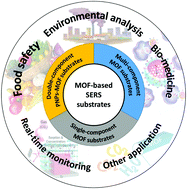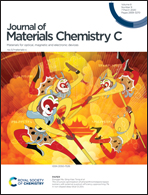Metal–organic frameworks: opportunities and challenges for surface-enhanced Raman scattering – a review
Abstract
The discovery of metal–organic frameworks (MOFs) has opened a new era in materials science investigations and applications in traditional fields due to their unique structures and properties. Recently, MOF-based surface-enhanced Raman scattering (SERS) has attracted much attention because MOFs can endow substrates with excellent properties to improve the sensing performance of traditional SERS substrates, such as molecular enrichment ability, selectivity, gas sensing capability, and additional chemical enhancement ability. Meanwhile, SERS can provide ultrasensitive fingerprint spectra for the rapid, non-invasive detection of trace analytes via effective SERS substrates. These advantages of the combination of MOFs and the SERS technique greatly advance the development of SERS and widen its application. To better understand this new application scenario, herein, we briefly introduce the recent progress of MOF substrates in SERS, mainly including the unique advantages of MOFs in the sensing performance improvement in SERS. Then, we present representative MOF-based SERS substrates. Furthermore, the SERS application of effective MOF-based substrates is also reviewed, including in food safety, environmental analysis, bio-medicine, real-time monitoring and other SERS applications. Finally, we present our conclusions and perspectives.

- This article is part of the themed collection: Journal of Materials Chemistry C Lunar New Year collection 2021


 Please wait while we load your content...
Please wait while we load your content...